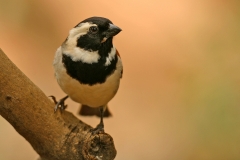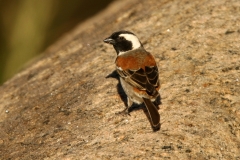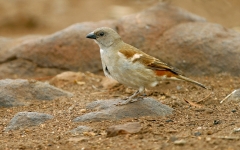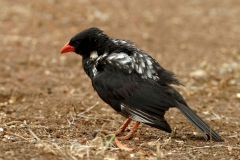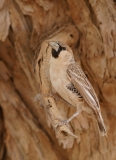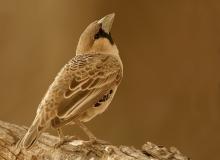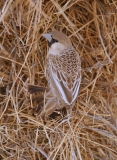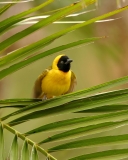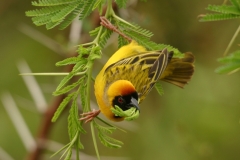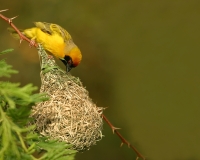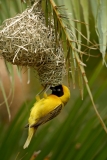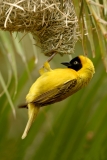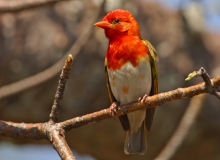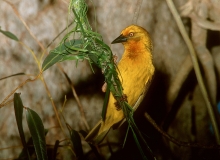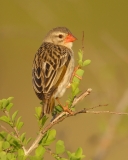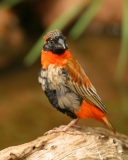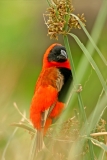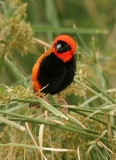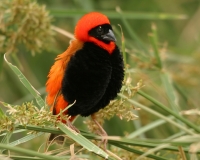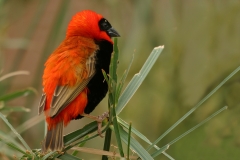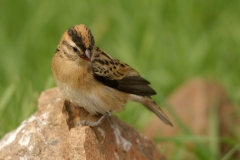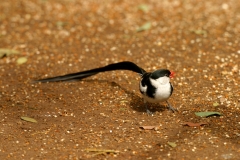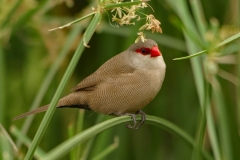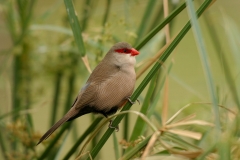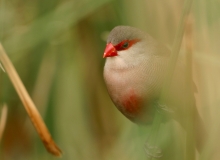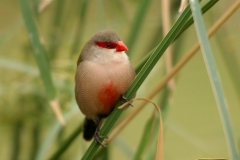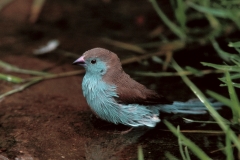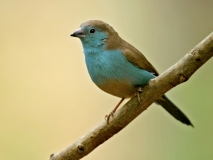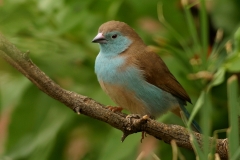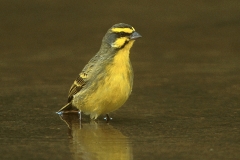African Weavers, Bishops, Whydahs & Waxbills
Along with the weavers, bishops, whydahs and waxbills there were few sparrows that drew our attention. Perhaps it was a matter of being so fascinated by the wonderful access we repeatedly had in photographing the art of nest building by the weaver birds. They were diverse in their coloration and in their habits. The Red-billed buffalo weaver, predominantly black, is one of the colony nesters. A dominant males controls a number of females. Each female has a chamber within one of the compartments of the big thorny-twig nest.
The cape weaver is yellow, the masked weavers were black faced, the red-weaver had a bright crimson head. The sociable weaver we photographed in the Kalahari Desert was a striking patterned bird in subdued tans, black and white. It is another colony nester with a huge nest that may contain chambers containing a hundred pairs of birds. The nests are attractive to other bird species as well. The pygmy falcon may use the nest, and even cape cobras and boomslangs prey on the eggs of their nests.
The red-billed quelea is a weaver bird that occurs in the thousands. A flock’s biomass represents an important food base for numerous other species. Herons, hawks, storks, owls, hornbills, rollers, kingfishers, shrikes, snakes, lizards and many mammals, especially small carnivores. Even human populations eat red-billed quelea.
The two waxbills we photographed were the common waxbill and the blue waxbill. These are members of the finch family. They have stout bills for seed eating. Like many finches, they have been popular in the pet trade. They have been introduced around the world, often due to escape from captivity or deliberately released.
The pin-tailed whydah is a parasitic brooder, that lays it eggs in finch nests. It especially uses the waxbill nests. Unlike our cuckoos, it does not destroy the host nest’s eggs, however.
